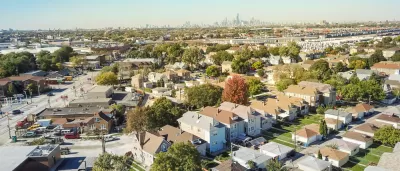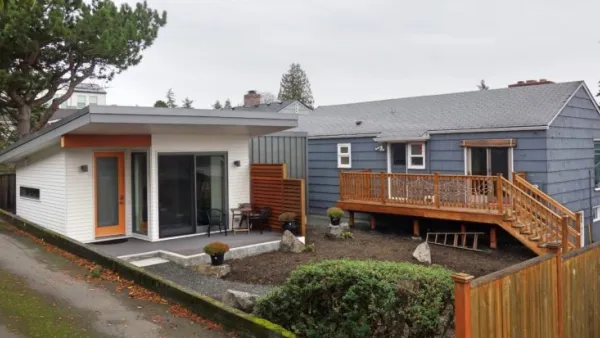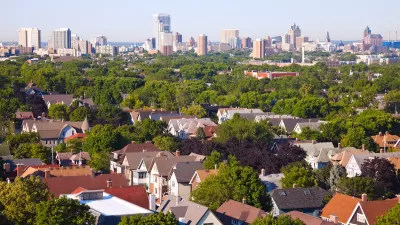An analysis of city-issued permits shows that homeowners in gentrified wards are building accessory dwelling units at much higher rates than those in less well-off communities.

In an evaluation of Chicago’s accessory dwelling unit (ADU) program, “The city’s Housing Department ran the data and found, at this early stage, the program is working in some ways but is challenged in others. It might just be adding expensive units in already expensive neighborhoods.”
As David Roeder reports for the Chicago Sun-Times, The program began as an experiment in “gently” expanding the housing supply to lower rents and create a revenue source for families. The city found that the program has not made an impact in neighborhoods with many vacant lots, nor are ADUs technically permitted to operate as short-term rental units to assuage concerns about transient occupancy.
According to the analysis, “83% of the approved units are slated to go in zones on the North or Northwest sides,” the more affluent parts of the city. This means that “In places plagued by crime and disinvestment, little is happening with ADUs.”
According to Housing Commissioner Marisa Novara, the discrepancy comes as no surprise. “By itself, the program can’t do much about longstanding inequity in real estate. Owners with greater disposable incomes are investing in the units while being in a high-rent area creates an incentive to build.” And while the city has made some grants available for ADU projects, Steven Vance of the Chicago Cityscape real estate information service says it could do more to support ADU construction for homeowners who can’t afford the upfront costs.
FULL STORY: City’s test of additional dwelling units finds most takers in gentrified wards

Maui's Vacation Rental Debate Turns Ugly
Verbal attacks, misinformation campaigns and fistfights plague a high-stakes debate to convert thousands of vacation rentals into long-term housing.

Planetizen Federal Action Tracker
A weekly monitor of how Trump’s orders and actions are impacting planners and planning in America.

San Francisco Suspends Traffic Calming Amidst Record Deaths
Citing “a challenging fiscal landscape,” the city will cease the program on the heels of 42 traffic deaths, including 24 pedestrians.

Defunct Pittsburgh Power Plant to Become Residential Tower
A decommissioned steam heat plant will be redeveloped into almost 100 affordable housing units.

Trump Prompts Restructuring of Transportation Research Board in “Unprecedented Overreach”
The TRB has eliminated more than half of its committees including those focused on climate, equity, and cities.

Amtrak Rolls Out New Orleans to Alabama “Mardi Gras” Train
The new service will operate morning and evening departures between Mobile and New Orleans.
Urban Design for Planners 1: Software Tools
This six-course series explores essential urban design concepts using open source software and equips planners with the tools they need to participate fully in the urban design process.
Planning for Universal Design
Learn the tools for implementing Universal Design in planning regulations.
Heyer Gruel & Associates PA
JM Goldson LLC
Custer County Colorado
City of Camden Redevelopment Agency
City of Astoria
Transportation Research & Education Center (TREC) at Portland State University
Jefferson Parish Government
Camden Redevelopment Agency
City of Claremont





























